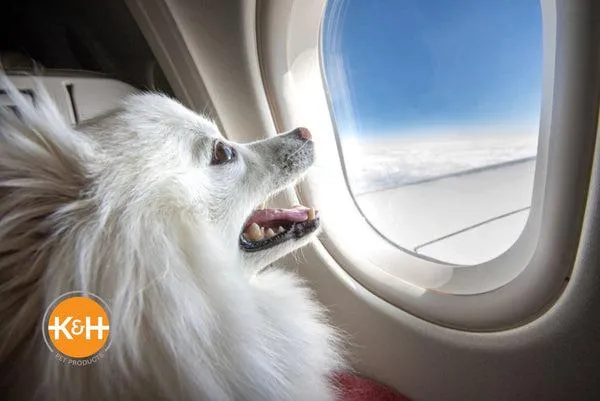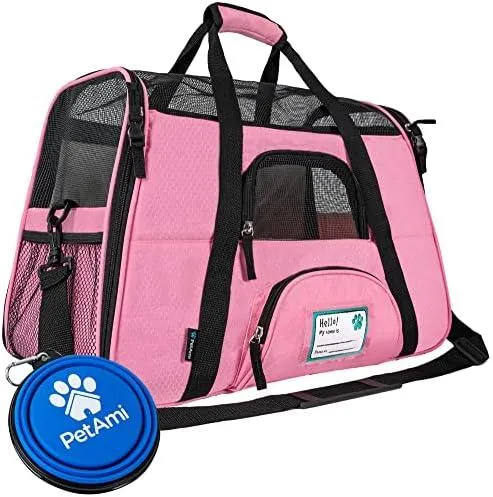A Guide to Flying With Your Large Furry Friend
If you’re planning a trip that requires air travel with your big dog, you may have some questions about what’s involved. From logistics like finding a direct flight and booking your pet’s ticket to preparing your pooch for the unfamiliar flying experience, there are definitely a few things you’ll want to consider. In this article, I’ll try to cover all the bases and provide answers to help make flying with Fido as smooth a journey as possible.
Step 1: Measure your dog and check size requirements
The first thing you need to do is get an accurate measurement of your dog to determine if they fall within the size limitations for traveling in the aircraft cabin. Most domestic airlines in the US allow dogs under 20 pounds to fly in-cabin without restrictions. However, many carriers have strict weight and size limits for larger dogs—usually no more than around 20-25 inches long from nose to tail and no heavier than around 70-100 pounds depending on the airline. You want to double check the specific policies for your preferred airline before booking to avoid surprises.
Step 2: Book flights that work for your pet
When selecting flights, aim for nonstop routes whenever you can to minimize the time your dog has to spend in cargo or at the airport. You’ll also want to choose flights that depart early in the day to reduce delays. Avoid late night flights if possible since dogs tend to get anxious in unfamiliar surroundings after dark. It’s also a good idea to book flights with layovers short enough that your dog wouldn’t exceed any limitations on time spent in cargo. Many airlines require pets to be checked through on a single reservation to avoid them being stranded alone during connections.
Step 3: Purchase your dog’s ticket
Most airlines charge a transport fee for flying with pets that needs to be paid when booking tickets. Rates vary by airline and size of dog, but expect to pay anywhere from $75 to $200 or more each way depending. The further in advance you purchase, the cheaper tickets tend to be. Once booked, you’ll receive travel documents to bring along proving your dog is booked for the flight.

Step 4: Prepare your pup with training and supplies
It’s a good idea to do some desensitization training with your dog before the big day to get them used to things like carrying, ear covers, and confinement. Practice transporting your pup in their carrier and leaving them for increasing periods. Make the carrier feel like a safe, comfortable spot. You’ll also want to bring their leash, food, collapsible water bowl, pee pads, toys or treats for distraction, vet health records and vaccination documents, and ID tags with your contact info in case of emergency.
Step 5: What to expect at the airport
- Arrive extra early to allow time for check-in.
- At check-in counter, present your pet’s ticket and required documents.
- A representative may inspect and tag your pet’s carrier.
- Your pet will be checked as oversized luggage at the gate.
- In the jet bridge, be prepared to surrender your dog for cargo hold loading.
Be sure your dog has been crated and time to potty before reaching the airport. Most airlines will check pets 2 hours before flight departure. This gives cargo handlers time to load them.
Step 6: Claim & travel with your pet upon arrival
When you land, one of the first things you’ll want to do after collecting your bags is head straight for the airline’s pet pickup area. Dogs arriving as cargo take priority to deplane for welfare reasons. Once claimed, you’re free to continue your journey with your four-legged friend. Be prepared for excited gestures as they’ll be thrilled to be back with their favorite human after the big adventure!
Step 7: Help keep your dog stress-free
While there’s no way to completely eliminate anxiety for dogs in unfamiliar situations like flying, try to minimize stress as much as you can. Use calming treats or supplements before travel. Keep enrichment toys and favorite blankets in their carrier. Playing calming music or white noise apps can also help soothe them. Remain positive and low-key handling your pet. With diligent preparation and handling their needs, hopefully their flying experience will be over before they know it!

From my experience providing boarding and transport for pets, keeping routines as normal as possible and exercising dogs well beforehand helps them cope better with travel disruptions. Always be over-prepared with paperwork and pack extra food, water, and simple distractions. Airports can be intense and dogs simply want our reassurance everything’s alright. A little TLC goes a long way to reducing unease when taking them along on flights. With the right strategies, flying no longer needs to be so frightening for large breeds or their protective owners.
I hope this guide has covered all the important things to consider and steps involved when flying commercially with a big pup. Don’t hesitate to double check policies and ask your vet or an experienced pet transport provider any other questions. Safe travels to both you and your furry friend!
Tips for Flying with a Large Dog
| Topic | Details |
|---|---|
| Airline Carrier | Check specific airline policies on weight limits and fees for large dogs traveling in-cabin |
| Crate Requirements | The crate must be large enough for your dog to stand up and turn around comfortably |
| Health Certificate | Most airlines require a health certificate from your vet no more than 10 days prior to traveling |
| Identification | Your dog’s collar should have ID tags with your contact information |
| Calming Aids | Consider calming supplements or treats and familiar toys or blankets to decrease stress |
FAQ
-
Can I fly with a big dog on a commercial flight?
Basically yes, you can fly with a big dog on most airlines. But there are some rules to keep in mind. The dog will need to travel in a carrier that fits under the seat in front of you. Make sure to measure your dog’s carrier to see if it meets the size limits. Airlines also have limits on dogs’ weight. At the same time, some airlines won’t accept certain dog breeds like Pitbulls. So check the airline’s policies in advance.
-
What paperwork do I need for my dog when flying?
Kind of a lot actually! You will need some important documents for your fuzzy flying friend. First off is proof of your dog’s vaccination records. Airlines require dogs to have current vaccinations against rabies and other diseases. Sounds reasonable right? You’ll also need the dog’s health certificate from a vet if you’re traveling abroad. And don’t forget your dog’s ID tag with up-to-date contact info in case they get lost. Oh, and the carrier must be clearly labeled too. Phew, maybe flying a small dog is less stressful!

-
How can I keep my dog calm on the plane?
There are some tricks to keep Fido feeling chill at cruising altitude. Make sure to take your pup out for a lengthy walk before the flight so they tire themselves out. Feeding dogs prior to travel can also help settle their stomachs. Consider anxiety medication prescribed by your vet. Doggie headphones to muffle sounds are another idea. And bring some chewy treats or toys in the carrier to occupy them through take-offs and landings. However, every dog is different so see what keeps yours calm and stress-free.
-
Do airlines charge extra for big dogs?
Yes, airlines usually tack on a fee for larger dogs or those flying in the cargo hold. Prices vary between carriers but can be around $100 to $200 or more per direction. And some airlines limit how many animals they will accept. Nevertheless, advance purchase economy fares may waive pet fees for checked dogs. It helps to search flight options from different airlines to find the cheapest rate. On the other hand, emotional support animals often fly free if you have paperwork from your doctor or mental health provider.
Now some sources and questions for you:
According to the U.S. Department of Transportation, airlines transported over a million dogs in cargo in 2017. But is that number as high as it seems, or are repeats counted? Clearly traveling by air with pets presents challenges. I wonder, what happens if a dog gets lost – do airlines try very hard to find them?

In summary, flying a big dog is basically doable if you plan ahead and follow each airline’s rules. Though it may cost extra cash and require some specific documents. Maybe ask your vet if your big pup is even suited for flying before booking those tickets! Let me know if any other questions come to mind.
